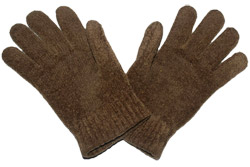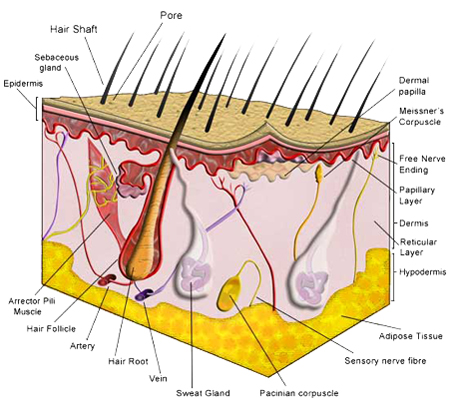Introduction to skin in winter
During the winter months our skin is subject to the damaging and drying effects of cold, windy weather and the low humidity of dry indoor heating. Our efforts to stay warm with long, hot showers and internal heating tend to suck the moisture from our body, leaving skin dry, itchy and prone to cracking. Those with sensitive skin or skin conditions such as eczema and rosacea are particularly affected. Severely dry skin can crack and bleed, creating sites that can be further irritated by soaps and clothing, and also making you more vulnerable to infection. Thus, it is just as important to take extra care of your skin during this season as it is in the summertime.
The skin as a protective barrier
The skin is the largest organ of the body. Some of its primary functions are to act as a protective barrier against the external environment, as well as prevent water loss. The outer-most layer of the skin, known as the stratum corneum (SC), plays an instrumental role in protecting skin against moisture loss. The SC consists of a layer of cells surrounded by lipids (oils) such as ceramides, cholesterol and fatty acids.These lipids determine the moisturisation levels of the skin.
The skin produces less of these oils during the winter months, thus making the skin more susceptible to abnormal dryness, also known as winter xerosis or winter itch. Xerosis is characterized by roughness, itching, scaling and flaking.
Dry skin tends to be more of a problem in older people because the skin is less able to hold its moisture, and the number of oil-producing sebaceous glands decreases with ageing.
Dry skin also occurs more frequently among people who wash their hands several times a day, as this strips the skin of its natural oils.
Tips for preventing dry winter skin
The key to preventing dry skin is keep the moisture locked in. There are several precautions you can take to avoid dry, itchy winter skin and maintain soft moist skin during the cold season.
1. Cut down on long, hot baths

In addition, try using a moisturising shower gel, or soaps that contain moisturisers. Harsh, drying soaps tend to strip the skin and wash away the body’s oils. Choose mild soaps that are non-alkaline and have added oils and fats (super fatted soaps). Super-fatted soaps are recommended because they have extra amounts of fatty acids (e.g. cocoa butter, coconut oil or lanolin). If you want to soak in a bath, use bath oils and consider adding colloidal oatmeal to your bath. This can help soothe and heal the skin.
After bathing, pat your skin dry (as opposed to rubbing) so that it retains some dampness. Moisturise within 3 minutes of stepping out of the shower.Moisturising while the skin is still slightly wet traps the moisture in and helps to reduce water lost through evaporation.

Moisturisers that are in an ointment form consist of an emulsion of 80% oil and 20% water, and are the most protective. Such water-in-oil emulsions form a protective layer on the skin, making it more effective than a cream or lotion. Lotions contain about 50% water, so are not the best at preventing moisture loss. They need to be reapplied more frequently.
Look for ingredients such as petrolatum, glycerin, mineral oil, linoleic acid, ceramides or dimethicone, which act to prevent moisture loss.Moisturisers containing alpha-hydroxy acid and urea help to soften the skin and remove surface scale.If dryness is severe, a prescription or over-the-counter moisturiser containing lactic acid can be used.
Lips also need to be protected, as they are easily prone to cracking and bleeding. Use a lip balm or sunscreen. For flaky, dry lips, a cream with a vitamin A derivative (retinol) will help reduce the build up of dry dead skin.
Exposed areas such as the face and hands are most affected by the elements, so focus on extra protection for these areas. The hands and feet have fewer sebaceous glands and are therefore naturally less oily than the rest of the body.
3. Use a humidifier in the home or office
This helps to add moisture to the air. Humidity levels of 30-40% are ideal for keeping moisture in your skin and preventing itching and cracking. Use humidifiers in rooms where you spend the most time, such as the bedroom and office.
4. Choose skin friendly fabrics

When going outdoors, remember to wear gloves to protect hands from the bitter, cold winds. If your clothes and especially socks and gloves get wet, remove them immediately as they can irritate the skin.
Hot air causes the blood vessels to dilate, which can stimulate itchiness. Cool air is more skin friendly, so turn down your heating and give your skin a break.
Drinking water is beneficial for those who are dehydrated but if you are not dehydrated, drinking water most probably won’t have an effect on your skin’s moisture levels.
Healthy skin can be encouraged by including certain foods in your diet, such as strawberries, blueberries, blackberries and plums, and foods containing essential fatty acids such as salmon, walnuts and canola oil.

The majority of dry skin problems can be resolved with simple measures. If you have a more serious skin condition such as ichthyosis or psoriasis prescription creams may be needed, so see your GP if you find your condition is worsening. Dry skin can sometimes lead to dermatitis, an inflammation of the skin or even cellulitis, a serious bacterial infection. This may require treatment with topical steroid containing creams.
More information
 |
For more information on how to stay healthy and beautiful, including information about nutrition, smoking and cosmetics, see Beauty and Health. |
References
- Rawlings AV, Matts PJ, Anderson CD, Roberts MS. Skin biology, xerosis, barrier repair and measurement. Drug Disc Today Dis Mech. 2008;5(2):e127-36. [Abstract]
- Proksch E, Lachapelle JM. The management of dry skin with topical emollients: Recent perspectives. J Dtsch Dermatol Ges. 2005;3(10):768-74. [Abstract]
- National healthy skin month: Winter skin care [online]. Schaumburg, IL: American Academy of Dermatology; 14 November 2007 [cited 15 July 2008]. Available from: URL link
- Conti A, Rogers J, Verdejo P, et al. Seasonal influences on stratum corneum ceramide 1 fatty acids and the influence of topical fatty acids. Int J Cosmet Sci. 1996;18(1):1-12. [Abstract]
- Skin needs ‘winterizing’ to head off damage [online]. Baltimore, MD: Johns Hopkins Medicine; 30 January 2007 [cited 15 July 2008]. Available from: URL link
- Harding CR, Watkinson A, Rawlings AV, Scott IR. Dry skin, moisturization and corneodesmolysis. Int J Cosmet Sci. 2000;22(1):21-52. [Abstract | Full text]
- Winter skin care guidelines [online]. Schaumburg, IL: EczemaNet; 2008 [cited 15 July 2008]. Available from: URL link
- Fluhr JW, Darlenski R, Surber C. Glycerol and the skin: Holistic approach to its origin and functions. Br J Dermatol. 2008;159(1):23-34. [Abstract]
- Zagaria MAE. Xerosis: Treating clinically dry skin. US Pharm. 2006;4:28-32. [Full text]
- Dry skin: Lifestyle and home remedies [online]. Scottsdale, AZ: Mayo Clinic; 30 November 2006 [cited 22 July 2008]. Available from: URL link
- Sullivan JR. A-Z of skin: Maintain youthful skin [online]. Rhodes, NSW: Australasian College of Dermatologists; 2 March 2001 [cited 23 July 2008]. Available from: URL link
- Rawlings AV, Matts PJ. Stratum corneum moisturisation at the molecular level: An update in relation to the dry skin cycle. J Invest Dermatol. 2005;124(6):1099-110. [Full text]
- Sullivan JR. A-Z of skin: Sun protection [online]. Rhodes, NSW: Australasian College of Dermatologists; 1 March 2001 [cited 2 August 2008]. Available from: URL link
All content and media on the HealthEngine Blog is created and published online for informational purposes only. It is not intended to be a substitute for professional medical advice and should not be relied on as health or personal advice. Always seek the guidance of your doctor or other qualified health professional with any questions you may have regarding your health or a medical condition. Never disregard the advice of a medical professional, or delay in seeking it because of something you have read on this Website. If you think you may have a medical emergency, call your doctor, go to the nearest hospital emergency department, or call the emergency services immediately.








